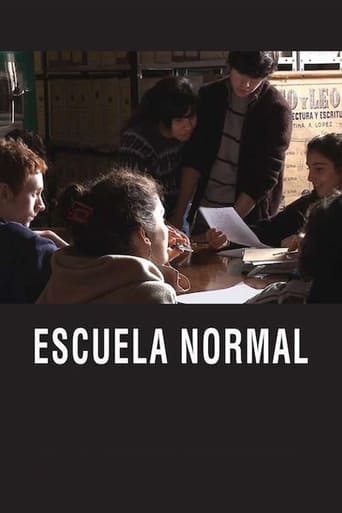kosmasp
You should be able to relate to the school theme of the movie. Whether you're still in school or you were at one time long ago. The chaos that ensues there is pretty interesting. Sometimes hard to follow (especially when watching with subtitles as we were at the Berlin International Festival), but always comprehensible.It does play like a documentary, but of course some things are staged. The director was there and there was a Q&A session after the movie was done. I don't think the new movie with Martin Scorsese was mentioned though. But this movie indicates that we should be watching out for more. The comedy timing of the movie is really great.
Avery Hudson
Opening with urban students' pre-dawn journey to a 19th century school building, first-time documentarian Celina Murga sets the stage for a very Fred Wiseman institutional portrait, capturing an historic Argentine high school in transition with an "observational camera subtly attuned to the traces of the political in the everyday." We follow an indefatigable principal as she tracks down absentee teachers, teaches a new custodian how to fill the soap dispensers, and locks down a classroom to quarantine a biting dog.We observe – surprise – that Argentinian kids are good looking. Morning assembly is like a room full of soon-to-be-discovered supermodels. But as classes begin, we learn that these students are also motivated and engaged. A civics class is enlivened by the objections of an atheist girl who objects to the term "God" in the Argentine constitution and organizes a "Fifth-year party" to oppose the incumbent "Centennial party" in the upcoming student council elections, with the goals of salvaging the school library and improving school lunches.Murga takes us to a reunion party of the class of 1928, a room of beautiful, spirited women who provide essential historical context. The Normal School of Parana was founded to train teachers who would be sent out to the provinces to "normalize" the mix of immigrants coming to Argentina from around the world to create an officially sanctioned Argentine society. Built for 800 students, the school is now responsible for more than twice that number, and the change from dictatorship to democracy has created enormous changes in education policy."It used to be a sanctuary for learning and now it's a lot more than that…and a lot less." I don't know, but from what I can see, these kids are all right. With luck, their voices will inform the next stage of American education.Murga is shooting her third feature film, La tercera orilla (The Third Side of the River), with Martin Scorsese as executive producer.Mirror post: http://blog.williamaveryhudson.com/?p=968
